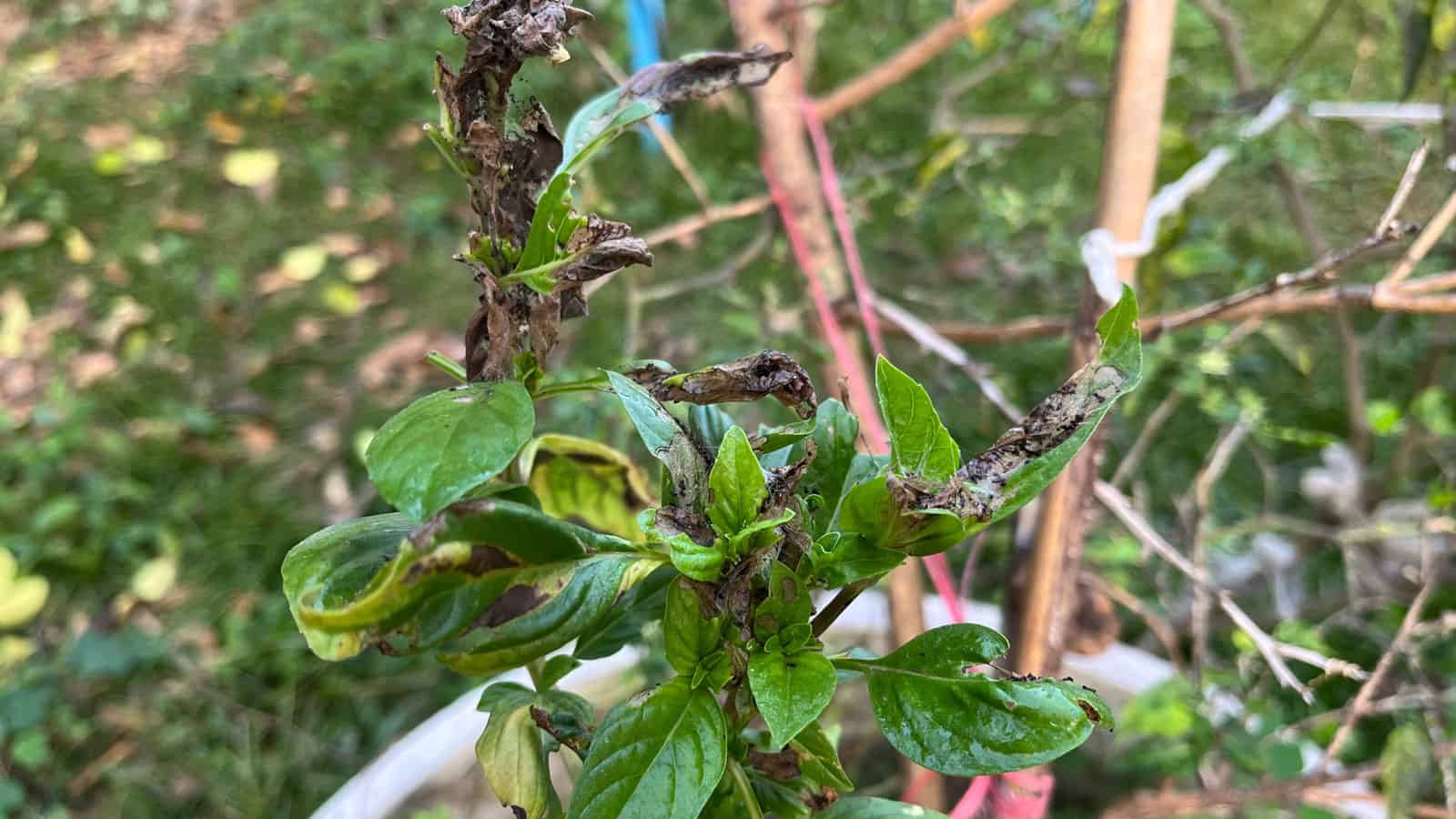Wilting basil can transform from droopy and sad to lush and vibrant with a few simple tricks.
Whether you're an experienced cook or just starting with herb gardening, there are straightforward strategies to revive your basil.

In this article, we'll explore four effective strategies to perk up your wilting basil, ensuring it remains a vibrant and essential part of your kitchen garden.
Why Is My Basil Plant Wilting?
Wilting in basil plants is a common sign that something in their environment isn't quite right.

Understanding why your basil is wilting is crucial for helping it recover. Here are some potential reasons why your basil is wilting.
Soil Moisture Troubles
One of the primary reasons for wilting is improper watering. Both overwatering and underwatering can cause significant stress to the plant.
Sunlight and Heat
Basil adores the sun, but too much can be stressful, especially with soaring temperatures. Alternatively, not enough sunlight can make your basil soft and weak.
Pot Size and Drainage
The size of the pot and its drainage capabilities also play a vital role. Basil plants need enough space for their roots to grow and adequate drainage to prevent root rot.
4 Effective Strategies to Revive a Wilting Basil
Now that you know the common culprits, you can troubleshoot your basil's droop! Here are some strategies to help your plant perk up from wilting.
Strategy #1: Water or Stop Watering at the First Sign of Wilting
It might sound confusing, but as we've mentioned, wilting in your Basil plants can happen due to both underwatering and overwatering.
If your basil leaves droop, it's usually a cry for water. Give the soil a thorough cold soak (not ice-cold!). However, if the soil feels soggy, ease up on the watering to let it dry out.
A consistent schedule ensures the soil stays moist but not soggy. Aim to give your basil deep watering every seven to ten days.
It's best to water in the morning. Doing so lets the plant absorb moisture before the sun's peak.
If you're unsure about the amount, here's a tip. Water until it seeps out the bottom of the pot; this ensures the roots get their share.
Strategy #2: Create Partial Shade During Peak Sun Hours
Basil enjoys sunlight, but too much can stress it out. If your basil is wilting, a sun break might be just what it needs. Giving it shade can be a quick fix to help revive your stressed plant.
Here’s what to do:
- Move the plant: Bring it indoors or to a shaded area during peak sun hours if it's in a pot.
- Create natural shade: Use taller plants to provide a protective, cooling shadow.
- Temporary covers: An umbrella or a woven shade cloth can work wonders.
Gentle morning rays are fine but avoid the harsh afternoon sun. Keep an eye on the thermometer, too. Basil is happiest at temperatures between 70°F and 80°F.
Strategy #3: Prune Dead or Dying Leaves
Removing the dead or dying leaves is crucial because it redirects your plant's energy to the healthier parts.
Identify the leaves that are beyond salvage — these will be the ones that are brown, yellow, or wilting.
With a clean, sharp pair of scissors or shears, cut the leaf at the base of its stem. Be mindful not to tear or damage the healthy parts of the plant!
Strategy #4: Ensure Optimal Drainage and Repot if Needed
Check to confirm that your pot has adequate drainage holes.
If water isn't draining well, consider a repot to a container with well-draining, loamy soil to let the roots breathe and grow.
Many indoor gardeners recommend this soil for its lightweight and well-draining qualities. Click the image below to see this indoor herb gardening soil.

Final Thoughts on Basil Revival Strategies
Reviving your wilting basil is straightforward and deeply rewarding! If you've left your basil under the sun for too long, a quick soak in cool water can work wonders as your basil springs back to life.
The simple act of pruning can promote a bushier and healthier plant, leading to an even more bountiful harvest.
And remember — finding that perfect watering balance is essential, as both overwatering and underwatering can lead to droopy basil.
